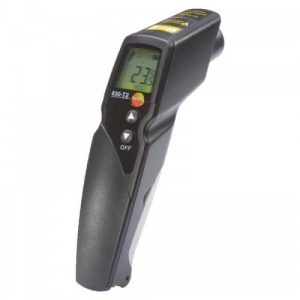An instrumentchoice.com.au/ infrared thermometer is a device that detects the temperature of a body by inferring the temperature from the thermal radiation of that body. This thermal radiation is known as black-body radiation. Detecting air leaks using an infrared thermometer is a great example. If you’re unsure how infrared thermometers work, read on to learn how they work.
Disadvantages of infrared thermometers
 Infrared thermometers don’t use laser beams to measure temperature. Instead, they detect the heat waves of objects, such as the human body, and then convert the energy into electricity. The device’s electronic circuit then processes this electrical signal to determine the temperature. While infrared thermometers are not known to be as accurate as other thermometers, they are inexpensive and convenient for home use. However, because of the risk of spreading diseases, you’ll want to be very careful when aiming the thermometer.
Infrared thermometers don’t use laser beams to measure temperature. Instead, they detect the heat waves of objects, such as the human body, and then convert the energy into electricity. The device’s electronic circuit then processes this electrical signal to determine the temperature. While infrared thermometers are not known to be as accurate as other thermometers, they are inexpensive and convenient for home use. However, because of the risk of spreading diseases, you’ll want to be very careful when aiming the thermometer.
One of the benefits of infrared thermometers is their speed. Unlike regular thermometers, infrared devices can detect temperature changes in seconds, so it’s important to know how long your device will last between readings. In addition, many infrared thermometers are designed to reset when they’ve been used automatically. Another advantage of infrared thermometers is that they can measure another object in addition to your own body. Another benefit of infrared thermometers is that they can store data about their measurements. However, this does vary between companies.
Applications of infrared thermometers
Infrared thermometers can be used in many applications to measure a single point’s actual surface temperature. The angular coverage and accuracy of infrared thermometers are important factors to consider. Some simple instruments have an error of two degrees Celsius or four degrees Fahrenheit. They can be categorized according to the distance to the measurement spot, distance to the area of the surface where the temperature is being measured, and angular coverage.
The basic principle of infrared thermometers is simple: the device funnels infrared radiation from a body through a thin film called a thermopile. The thermopile then converts this energy into an electrical signal, which can be displayed in temperature units. Non-contact infrared thermometers are particularly useful when thermocouples cannot be used, as the user does not need to come in contact with the object. They also produce accurate data.
Field of view of infrared thermometers
The instrumentchoice.com.au/ infrared thermometer has an optical system that produces a measurement spot on a solid or opaque surface. Using an elliptical measurement spot maximizes the area measured. IR thermometers’ D:S ratios are proportional to the sophistication of their optical system. Typical D:S ratios vary from 1:1 on low-end instruments to 60:1 or higher on high-end models. The chart below provides examples of the area covered by different D:S ratios.
The IR thermometer’s Field of View size can also be adjusted to accommodate different objects. Since IR thermometers can measure small objects, the FOV of an IR thermometer can be significantly larger than an ant collection. The field of view of an IR thermometer is the primary factor in obtaining a precise temperature reading. Infrared thermometers typically have a field of view of about 12 inches, which is larger than a human’s.
Detection of air leaks with infrared thermometers
instrumentchoice.com.au/ Infrared thermometer is hand-held devices that measure temperature changes. They come in various sizes and models, and their use varies. For example, a laser thermometer might be a good option if you’re looking for an affordable way to detect air leaks in your home. However, the cost of a thermal imaging camera can be well over a thousand dollars, and it’s not feasible to hire a professional energy auditor unless you have the means to pay for one.
To check for air leaks in your home, use an infrared thermometer. The device detects temperature differentials and allows you to pinpoint the location and severity of the leak. Using the device, aim it at the door or window frame. If you see an extreme difference in temperature, the door or window is probably not properly insulated. You can fix the issue by caulking the gap or installing new weather-stripping and adjusting the threshold.
Cost of infrared thermometers
Infrared thermometers are becoming more affordable as more people understand the advantages of this tool. However, the cost is still a determining factor in whether or not you should invest in one. For starters, you should ensure that it’s easy to read with its well-lit display and has a one-year warranty. If you’re looking for a multi-purpose tool, consider the Fluke 62 multi-function infrared thermometer kit. This kit includes a digital multimeter, thermometer, and HVAC multimeter.
